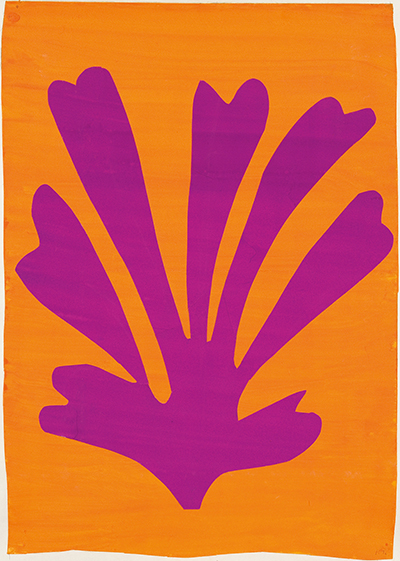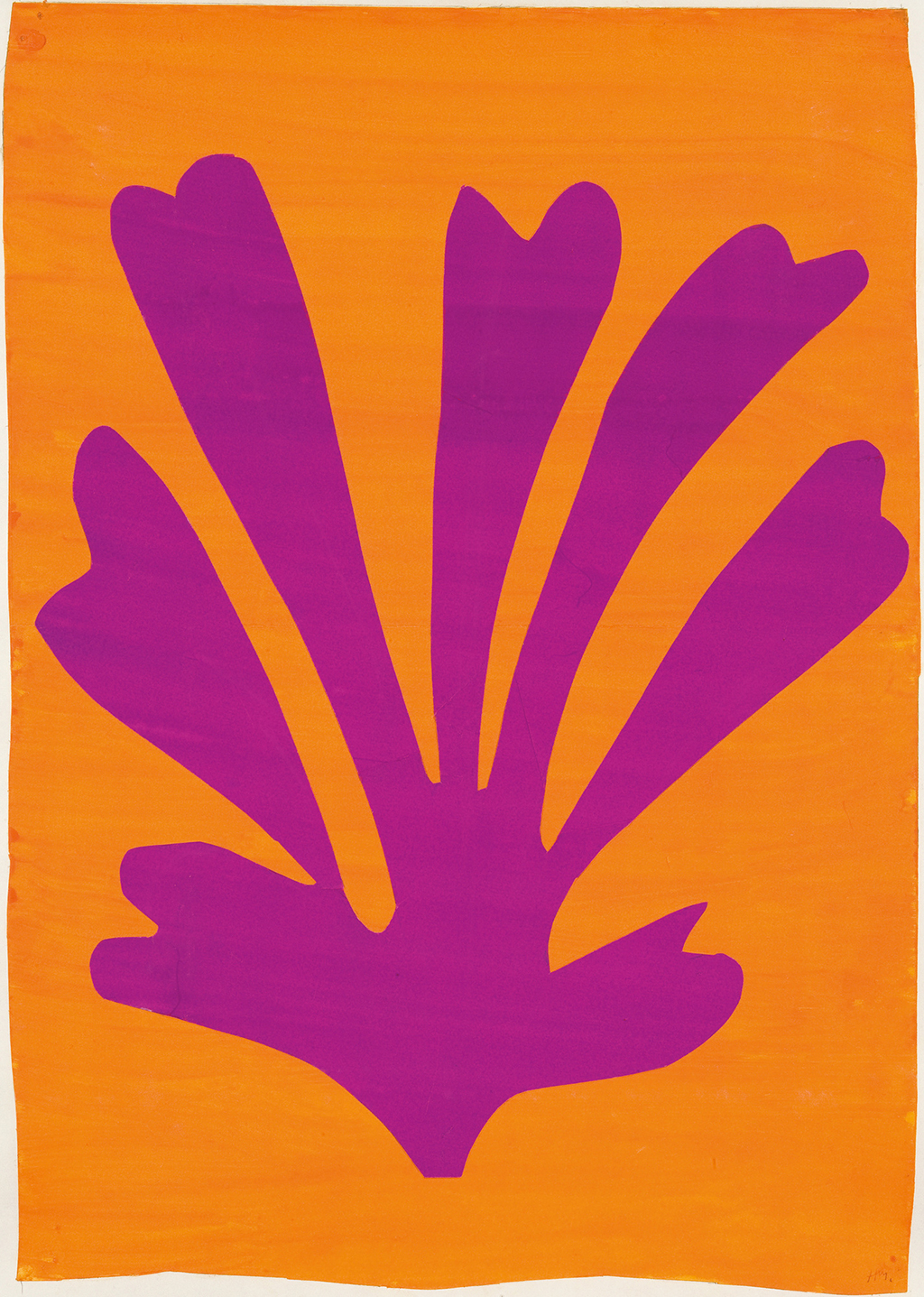Palmette is a simple artwork from Henri Matisse which arrived in around 1947. During this decade the artist was busily innovating and finding new ways to express his contemporary style.
The main interest here is the plant shape and also the bright colour contrast. We see an organic object, plant-like in nature, with multiple leaves branching off in different directions. We immediately recognise this form from other Matisse paintings and cut-out illustrations. He was creating a sort of visual language which would be used across different mediums. The shapes would always be simple and also connect with each other along similar themes. The artist would produce these shapes by cutting out paper with scissors and then gluing them onto other pages. He would always consider tone, and in this case creates a beautifully contrasting scene by combining orange and purple together. He was a Fauvist at times in his career, and so bright, clashing colours were not unusual within his oeuvre. This bold choice works well and helps to produce an entirely memorable artwork which helps to summarise his work across the 1940s.
The Frenchman would become known as one of the key influences on the direction of modern art. Many academics have explained how certain highlights from his career have helped to push certain ideas and styles into the work of others who followed on afterwards. There was a great exchange of ideas right across the 20th century but those are the forefront held the greatest influence. Their use of colour and form would reject values from the past, whilst still offering respect to what had been achieved up to that point. The intention was not to criticise those from previous centuries, but merely to object to being forced to work within the same manner themselves. Art education had always taught similar principles and whilst these were valuable, they risked reducing one's individual freedom of expression and block off the path to development.
Matisse would stick with certain favoured coloured throughout his cut-out period, though sometimes he might use a wider palette when there was enough time to actually paint each and everyone of these pages of paper, prior to then starting to cut out shapes using his scissors. It still seems extraordinary that someone could actually achieve so much even as his health deteriorated but this sums up the genius of the man, as well as the internal drive which kept active throughout his lifetime. He would ultimately leave behind an impressive oeuvre which ran into the many hundreds of artworks and continues to interest people today, many decades after he passed away.





